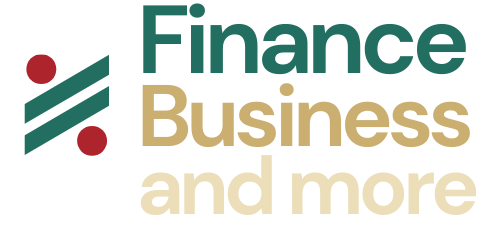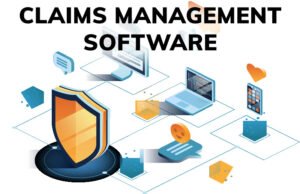For farmers and agricultural workers, the land is more than just a workplace—it’s a livelihood, a legacy, and often, a labor of love passed down through generations. But with such passion and dedication comes the inevitable risks—unexpected accidents, legal claims, financial burdens—that can threaten everything you’ve worked so hard to build. Enter Vendor Liability Insurance, your shield against these uncertainties.
If you sell products at markets, deliver goods, or operate within the agricultural industry, vendor liability insurance provides essential coverage to safeguard your business. This blog will guide you through why it’s vital, what it covers, and how to secure the right policy for your needs.
What is Vendor Liability Insurance and Why Does It Matter?
Vendor liability insurance is a type of coverage designed to protect vendors, including farmers and agricultural workers, from financial losses related to lawsuits and claims. It covers a wide range of scenarios, such as customer injuries or property damage caused by your product or operations, ensuring that an unexpected incident doesn’t bankrupt your business.
For farmers selling fresh produce, honey, eggs, or any other product at farmers’ markets or food festivals, one claim could lead to substantial financial loss. Vendor liability insurance offers protection and peace of mind, allowing you to focus on your business without worrying about the “what ifs.”
Why It’s Particularly Relevant for the Agricultural Industry
Farmers and agricultural workers face unique challenges, including:
- High foot traffic at produce stalls or booths, increasing the likelihood of accidents.
- Potential liability from damaged or contaminated goods.
- Precautions required for using heavy machinery at public events.
By addressing these specific risks, vendor liability insurance plays a crucial role in safeguarding the agricultural community.
Understanding What Vendor Liability Insurance Covers
To fully appreciate the importance of this policy, it’s essential to understand the types of coverage vendor liability insurance offers. Here’s a breakdown of what’s typically included, paired with relatable examples:
1. Bodily Injury
If a customer trips over equipment at your farmers’ market stall and sustains injuries, vendor liability insurance covers medical costs and legal fees.
2. Property Damage
Imagine a customer accidentally damages their car while unloading a large bale of hay they purchased from you. Vendor liability insurance would cover the repair costs.
3. Product Liability
If one of your agricultural products, such as eggs or dairy, causes an allergic reaction or illness, product liability coverage protects you against legal claims or associated damages.
4. Personal Injury
You may also be liable for claims like defamation or slander related to your business. Vendor liability insurance offers a safety net for such less common but equally serious risks.
By understanding these coverage types, you can better grasp how vendor liability insurance protects your livelihood in various scenarios.
How to Acquire Vendor Liability Insurance
Getting vendor liability insurance doesn’t have to be a burden. Here’s a step-by-step guide:
Step 1. Assess Your Risks
Review your operations and identify potential risks. Do you frequently attend markets with heavy foot traffic? Are your products perishable or prone to contamination? Understanding these risks can help determine the level of coverage you need.
Step 2. Compare Policies
Research vendors that specialize in agricultural insurance. Read their policy details carefully, comparing factors like coverage limits, exclusions, and deductibles.
Step 3. Consider Additional Endorsements
Depending on your business, you might need additional endorsements like product recall coverage for contaminated goods or cyber liability insurance if you handle customer data digitally.
Step 4. Read Reviews and Get Recommendations
Ask fellow farm vendors or local agricultural associations for recommendations on reliable insurance providers. Reviews and referrals offer insights into customer satisfaction and claim handling.
Step 5. Consult an Expert
Contact insurance representatives or brokers who can walk you through the policy and tailor coverage to your unique needs.
Step 6. Purchase and Stay Updated
Once you’ve chosen a policy, make the purchase and ensure you review your coverage annually or as your business grows.
Remember, the right insurance policy is not about checking a box—it’s about creating a safeguard tailored specifically to your needs.
Why Farmers and Agricultural Workers Need Vendor Liability Insurance
The agricultural industry is no stranger to challenges. Harsh weather conditions, fluctuating market prices, and now, more than ever, legal risks can jeopardize your business. Vendor liability insurance takes one of those burdens off your shoulders.
Consider these scenarios unique to farmers:
- A customer sues you claiming that pesticides used on your produce caused adverse health effects.
- A bushel of apples falls and injures someone at your stall.
- A delivery vehicle causes damage to a client’s property while unloading goods.
Each of these situations could result in financial strain for an uninsured farmer. Vendor liability insurance removes the uncertainty, providing security and peace of mind.
Real-life Success Stories of Vendor Liability Insurance
Case Study 1: The Faulty Jam Jar Accident
A couple, Hannah and Jim, who sell homemade jams at pop-up markets shared how vendor liability insurance saved their business. One day, a customer cut themselves on a sharp edge of a jam jar lid. The customer filed a claim for medical and emotional damages. Because Hannah and Jim had vendor liability insurance, the medical bills and legal fees were fully covered. “Without it, we would’ve gone under,” Hannah shared gratefully.
Case Study 2: A Farmer’s Market Mishap
A tractor-trailer delivering artisanal dairy goods accidentally scraped and damaged a parked vehicle. The costs to repair the vehicle were covered entirely under vendor liability insurance, saving the vendor from a steep out-of-pocket expense.
These stories highlight real, everyday risks that insurance can mitigate, offering financial protection and invaluable relief.
Frequently Asked Questions About Vendor Liability Insurance
Do I really need vendor liability insurance if I have a small operation?
Yes, even small-scale vendors are at risk of legal claims. Insurance protects you no matter the size of your business.
How much will vendor liability insurance cost?
Costs vary based on coverage, business size, and associated risks. On average, agricultural vendors might pay between $300-$600 annually for a basic policy.
Can I get coverage for one-time events?
Yes, many insurers offer event-specific vendor liability insurance for short-term needs like fairs, markets, or festivals.
What happens if I don’t have vendor liability insurance?
Without insurance, you are personally liable for any claims or damages. This could result in significant financial loss or even forced business closure.
Does it cover employees?
Vendor liability insurance may also protect employees depending on your policy. Be sure to confirm this with your insurer.
Secure Your Future, Protect Your Livelihood
Vendor liability insurance isn’t just an expense—it’s an investment in your business’s future. Whether you’re selling honey at a weekend market or operating a larger-scale agricultural venture, this coverage ensures that you can focus on the work you love without worrying about potential risks.
With the right policy in place, you’re not just protecting your business—you’re safeguarding your legacy. Don’t wait for an accident or lawsuit to remind you of the importance of being insured.
Ready to take the first step? Get in touch with a trusted insurance provider today to discuss how vendor liability insurance can work for your business.



